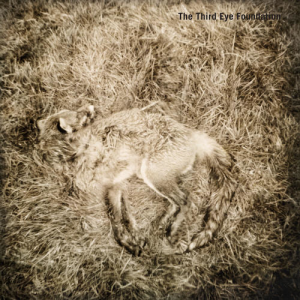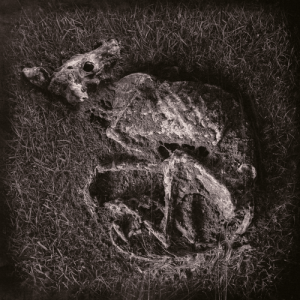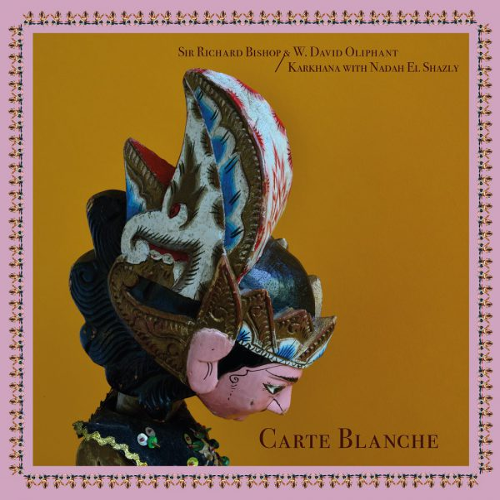 It’s great to hear Semtex again and what a fizzing refresher of fortitude “Sleep” still is – a bastardised drum foray tied to a ugly slurry of overdriven noise. Yeahhhh, as first tracks go, this is a tight shiny driven thing, a dervishing centrifuge storming the brain in raw energy. Then just to confound you further it levitates in a flang-a-pani spin cycle, gathers itself into a heady banquet of effect-driven melodies with thorny briars that rip at its delicate throat. This is one of Matt Elliott‘s best and I’m glad to say the rest of the album doesn’t hide behind its shadow.
It’s great to hear Semtex again and what a fizzing refresher of fortitude “Sleep” still is – a bastardised drum foray tied to a ugly slurry of overdriven noise. Yeahhhh, as first tracks go, this is a tight shiny driven thing, a dervishing centrifuge storming the brain in raw energy. Then just to confound you further it levitates in a flang-a-pani spin cycle, gathers itself into a heady banquet of effect-driven melodies with thorny briars that rip at its delicate throat. This is one of Matt Elliott‘s best and I’m glad to say the rest of the album doesn’t hide behind its shadow.
Originally recorded over twenty years ago in a squat which Matt shared with Crescent‘s Matt Jones, this was four-track fodder that wrestled the most out of his limited tech to deliver a gritty adventure that circumvented the fashionable for plenty of endeavouring flavour.
Not quite the all-out assault of “Sleep”, the eleven-minute “Still Life” follows, swaying like a belly dancer sparkling with cymbal sibilance, its vocal nectarines bleeding, as kettling percussion flirts with undulating curves, thrown out into a textural monsoon. Overdriven, passionate, before transforming into a slow drift into the ambient heavens.“Dreams On His Fingers” has the first lyrical play (in the loosest sense), a Movietone whisper supplied by Foehn (Debbie Parsons) lulling you to your doom in a Vicks vapour rub of contoured fades. An alluring half-light of droning dub, constantly on the verge of collapse, like a Francesca Woodman photographic smear dancing your head with more than the sum of its parts. The hypothermic shiver of “Next Of Kin” too, its yarning sighs calling you to the bassline’s submerged depths.
Four tracks that cosy up to the twelve-minute centrepiece that is “Once When I Was An Indian”. A cinematic Muslimgauze-esque of bodhrán drum and fait vocal chant Lisa Gerrarding away to a rat-a-tatting tempo, the drama fading out to return all flare-fired firework awesome and dynamically cavernous. The vocals hypno-weaving amongst the bold percussive architectures as the air literally distorts around their signatures – aerosol(ed) shivers caught on its piano chord finality.These are all reminders just how inspired this album still is. The gliss-soaked oeuvre of a dripping tap (“Rain”) that ended the original holding a dim light to the magnificence – until, that is, its splashing droplets are transformed into a distorted squalor of bats.
 The extras though are the real winners here, culled from Matt’s personal archive of cassette demos recorded from around the same period Semtex was percolating away. If you have the original album, it’s totally worth investing your time in this reissue just for these never heard-before gems, a rich feast blistering with invention, a Gilbert and Lewis-type itchiness with a flair for making the discordant strangely tuneful, the noisy psychotropic.
The extras though are the real winners here, culled from Matt’s personal archive of cassette demos recorded from around the same period Semtex was percolating away. If you have the original album, it’s totally worth investing your time in this reissue just for these never heard-before gems, a rich feast blistering with invention, a Gilbert and Lewis-type itchiness with a flair for making the discordant strangely tuneful, the noisy psychotropic.
Just when you find it dipping in atonal glee it flips with dancability and vice-versa. A mind-melting twenty-four tracks (some of which are download only) full of a buttery sense of adventure that chimpanzees with your expectation as much as it informs you on Semtex‘s hitherto shady evolutions (“Hollow Soul” certainly sounds like a precursor of “Sleep”), not to mention the amount of eerie late-night listening that’s to be had.
The piano molokos of “Die!” crystal-glazing into an Angus malaise of backward glances as weirded-out splashes of metal, chant and joy-ridden wheels smear the tarmac, maybe holding clues to “Once When I Was An Indian”‘s dramatic slight returns. The “Hymn To Pan” a possible inkling of the first half of the same track, and I really wish he’d included that ballooning of delayed laughter on the finished version. The rotating grace of “Shard” caracoling another dimension to feathered falls of guitar and that sweet-as Airwave/turntable fuckery at the end, all belaying the changeable slip-slide of the original feast.It’s all expertly tailored to grab your ears in a attentive calculus of subtraction, addition and shadow-boxing secondaries: the curb-curling keystrokes, the shuffle and scuffle of it all, the drop-outs and crackles all part of the lo-fi sincerity. “Alarm Song” tranquilising the textural possibilities of repeat, the Kristallnachts of “Leaving”; “Get to Fuck”‘s raspy distorto over-modulated gulp. There’s even a thirty-five minute track (“Voyager”) whose noisy ambience is rapidly gathering up the accolades for my best track of 2016, closely followed by the scary patchwork that is “A Silent Longing”.
Musical archaeology never felt so engaging.
-Michael Rodham-Heaps-



